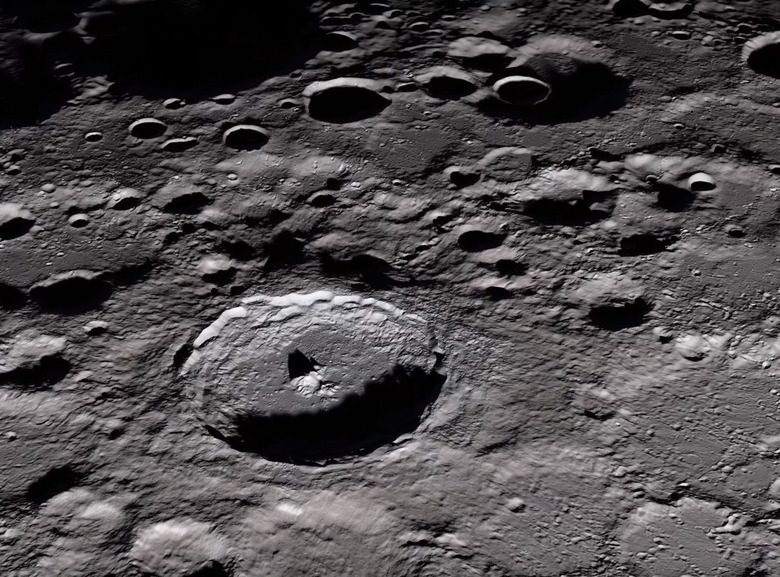NASA Might Actually Build A Telescope On The Moon
Radio telescopes are incredible pieces of technology. They allow scientists to probe deep into space and gather data from billions of years ago. They're powerful, but they're also quite large, and that makes them somewhat of a pain to build. As we recently saw with the Arecibo observatory, they are not immune to failure, and that telescope, in particular, became a victim of gravity itself.
Constructing a radio telescope requires a massive amount of space to build the colossal dish. The concave structures take up a lot of room — Arecibo sat on 118 acres of land, for example — and building the dish structure itself takes a long time. But there's a place where humans have traveled where huge concave dish-like structures already exist naturally, and NASA thinks it might make the perfect spot for a brand new radio telescope that could peer deeper into the Universe than ever before. The place? The Moon.
The Moon is covered with craters that closely resemble the dish-like shapes of radio telescopes. Because the craters have been blasted into rock, they're relatively stable, and the fact that they exist outside of Earth's atmosphere makes them even more exciting from a scientific standpoint. But you just can't send a crew of construction workers to the Moon to lay the groundwork for a telescope in a Moon crater, so NASA is considering other options, including sending robots to do most of the work.
The idea here is that NASA wouldn't need to build the dish itself when constructing a lunar radio telescope. Instead, the space agency could send a mission to the Moon that would lay a net-like mesh grid along the inside of the crater, stretching up to the edges. This grid would be designed to reflect radio waves up toward a receiver, just like in an Earth-based radio telescope. This wouldn't require NASA to send a lot of heavy equipment to the Moon, but that doesn't mean the process of building out the telescope would be easy.
NASA, which has now set aside half a million dollars to flesh out the concept of the Lunar Crater Radio Telescope (LCRT), thinks it would be best to set it up on the far side of the Moon. This would complicate matters a bit, but the result would be a telescope free from radio interference from Earth. The telescope would also have the advantage of not having to peer through Earth's atmosphere in order to gather data, and that would make it particularly useful as scientists continue to probe the cosmos in search of radio wavelengths that can be traced back billions of years.
"While there were no stars, there was ample hydrogen during the universe's Dark Ages – hydrogen that would eventually serve as the raw material for the first stars," Joseph Lazio of NASA's Jet Propulsion Laboratory said in a statement. "With a sufficiently large radio telescope off Earth, we could track the processes that would lead to the formation of the first stars, maybe even find clues to the nature of dark matter."
